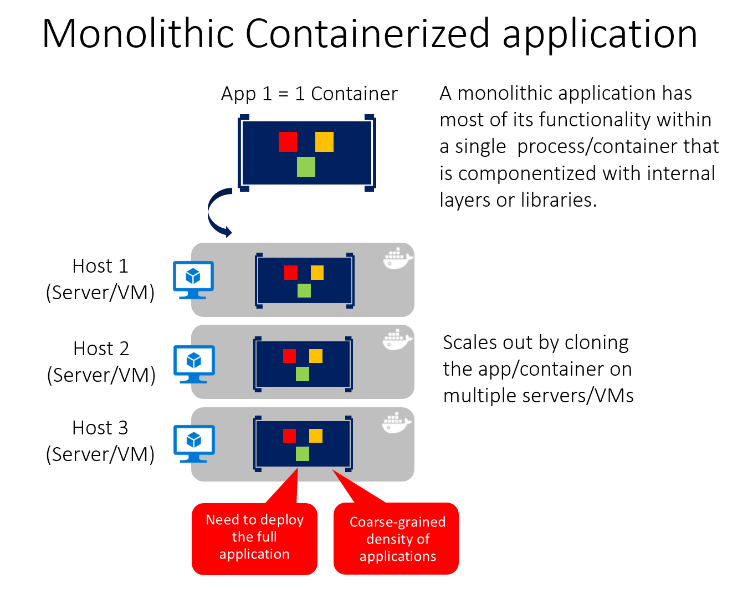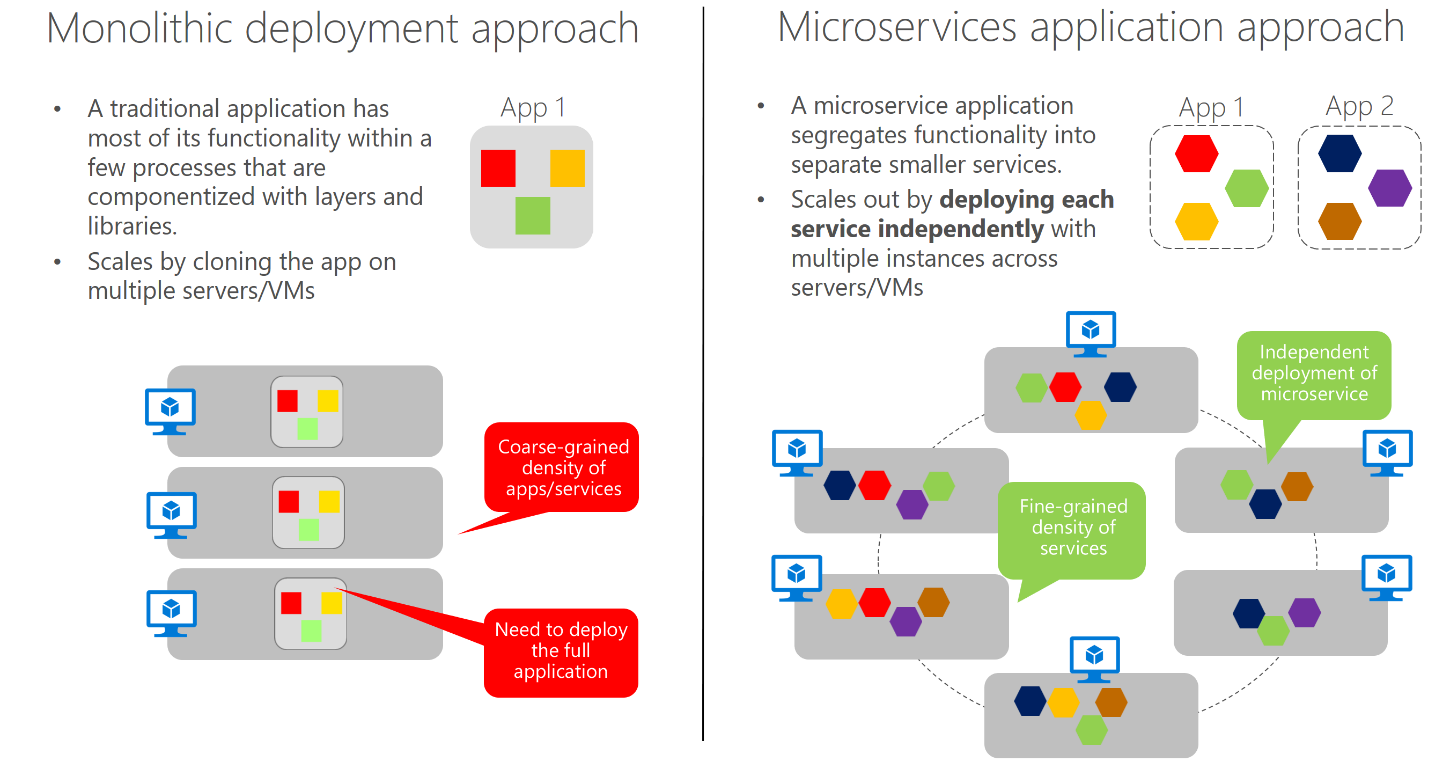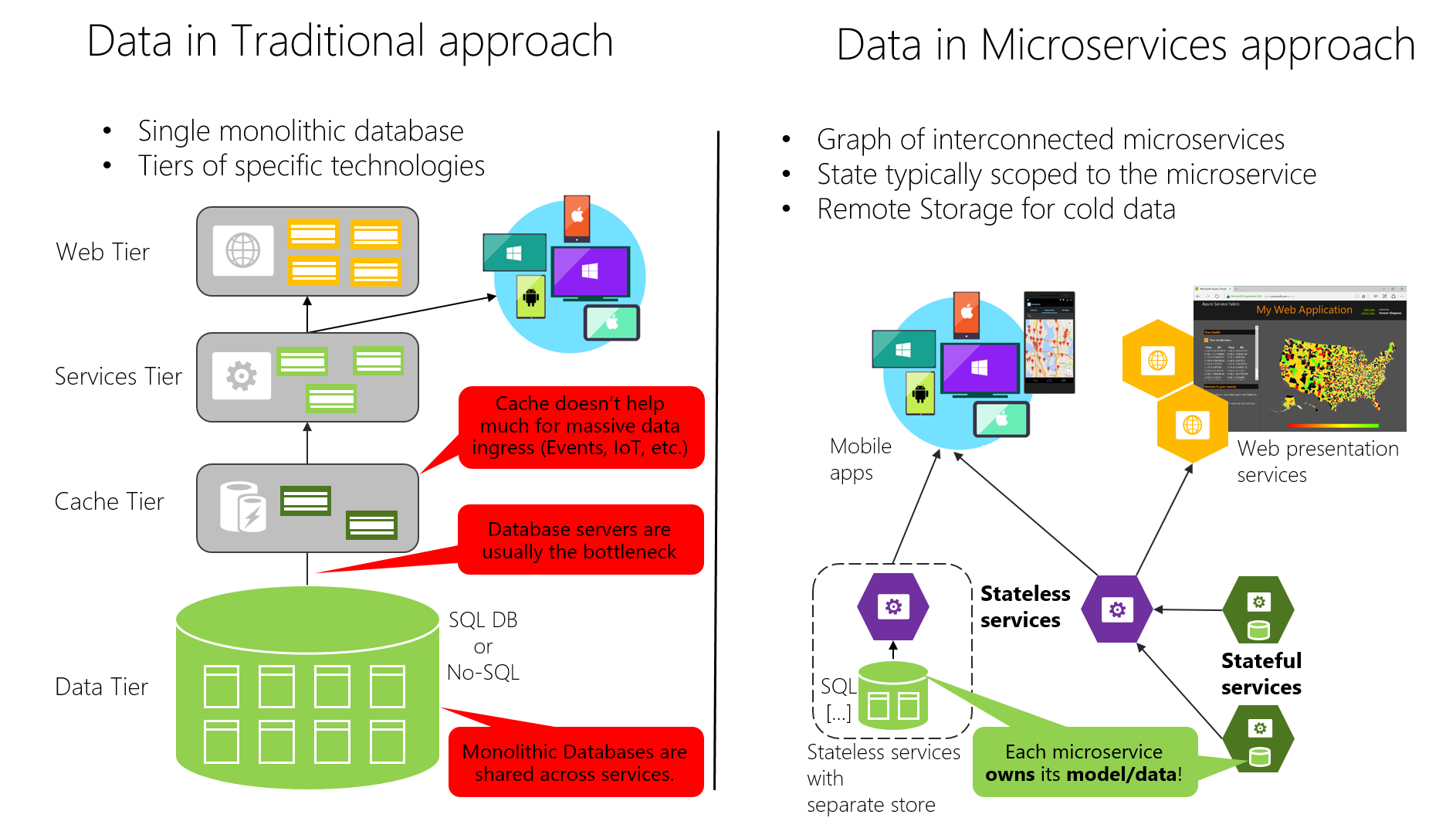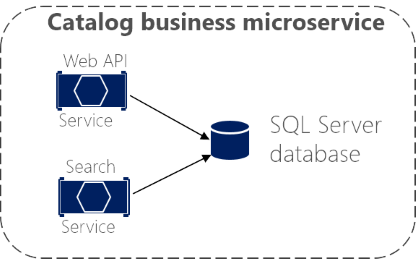Container design principles
When you design a container image, you'll see an ENTRYPOINT definition in the Dockerfile. This definition defines the process whose lifetime controls the lifetime of the container.
If the process fails, the container ends, and the orchestrator takes over. If the orchestrator was configured to keep five instances running and one fails, the orchestrator will create another container instance to replace the failed process.
Containerizing monolithic applications
 The downside of this approach becomes evident if the application grows, requiring it to scale. In most cases, just a few parts of the application are the choke points that require scaling, while other components are used less.
The downside of this approach becomes evident if the application grows, requiring it to scale. In most cases, just a few parts of the application are the choke points that require scaling, while other components are used less.
Manage state and data in Docker applications
From Docker:
- Volumes are stored in an area of the host filesystem that's managed by Docker.
- Bind mounts can map to any folder in the host filesystem, so access can't be controlled from Docker process and can pose a security risk as a container could access sensitive OS folders.
- tmpfs mounts are like virtual folders that only exist in the host's memory and are never written to the filesystem. From remote storage:
- Azure Storage, which provides geo-distributable storage, providing a good long-term persistence solution for containers.
- Remote relational databases like Azure SQL Database or NoSQL databases like Azure Cosmos DB, or cache services like Redis.
Service-oriented architecture (SOA)
SOA means that you structure your application by decomposing it into multiple services.
Microservices architecture
It's an approach to building a server application as a set of small services. Each service runs in its own process and communicates with other processes using protocols such as HTTP/HTTPS, WebSockets. Each microservice implements a specific end-to-end domain or business. Each microservice should own its related domain data model and domain logic.

The following are important aspects to enable success in going into production with a microservices-based system:
- Monitoring and health checks of the services and infrastructure.
- Scalable infrastructure for the services (that is, cloud and orchestrators).
- Security design and implementation at multiple levels: authentication, authorization, secrets management, secure communication, etc.
- Rapid application delivery, usually with different teams focusing on different microservices.
- DevOps and CI/CD practices and infrastructure.
Data sovereignty per microservice
An important rule for microservices architecture is that each microservice must own its domain data and logic. This principle is similar in Domain-driven design (DDD), where each Bounded Context or autonomous subsystem or service must own its domain model (data plus logic and behavior).

A monolithic application with typically a single relational database has two important benefits: ACID transactions and the SQL language.
However, data access becomes much more complicated when you move to a microservices architecture. Even when using ACID transactions within a microservice or Bounded Context, it is crucial to consider that the data owned by each microservice is private to that microservice and should only be accessed either synchronously through its API endpoints(REST, gRPC, SOAP, etc) or asynchronously via messaging(AMQP or similar).
Microservices-based applications often use a mixture of SQL and NoSQL databases, which is sometimes called the polyglot persistence approach.
Each microservice owns its related data. In addition, each BC usually has its own ubiquitous language to help communication between software developers and domain experts.
Logical architecture versus physical architecture
A business microservice or Bounded Context is a logical architecture that might coincide (or not) with physical architecture.
The important point is that a business microservice or Bounded Context must be autonomous by allowing code and state to be independently versioned, deployed, and scaled.

The catalog business microservice could be composed of several services or processes. More importantly, the services could share the same data, as long as these services are cohesive with respect to the same business domain.